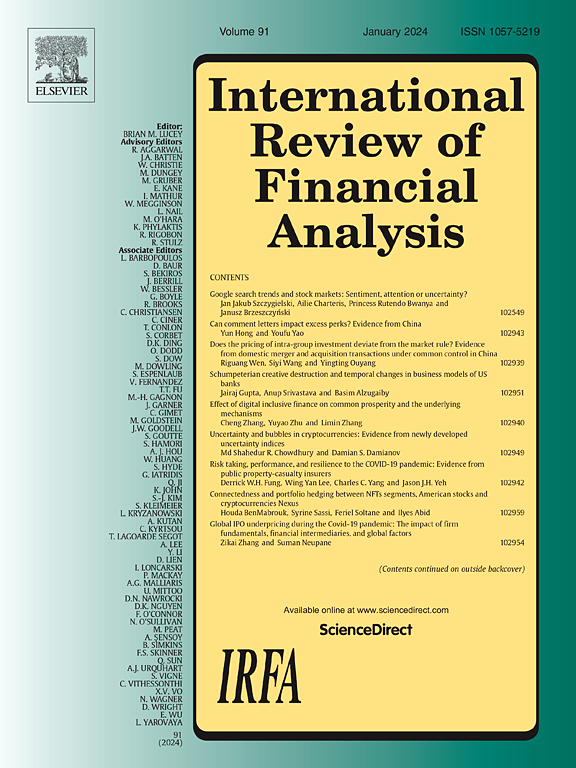经济和金融发展是加密货币采用的决定因素
IF 7.5
1区 经济学
Q1 BUSINESS, FINANCE
引用次数: 0
摘要
本研究调查了加密采用的宏观经济决定因素,阐明了加密货币加速金融包容性的潜力。通过利用2019年至2021年间来自165个国家的广泛数据集,本研究采用了各种计量经济学方法,包括面板可行广义最小二乘法(PFGLS)、稳健最小二乘法(RLS)和分位数回归(QR)。这些经典的计量经济学技术得到了一些机器学习技术的补充,如Bagging、Boosting和支持向量机(SVM)回归,以及人工神经网络(ann)和Naïve贝叶斯(NB)分类算法。结果显示了一个有趣的趋势:加密货币的采用在金融市场强劲和教育水平较高的国家更为普遍。这表明,加密货币的采用主要是复杂的金融环境和受过教育的人口的副产品,而不是金融包容性的直接促进者。本文章由计算机程序翻译,如有差异,请以英文原文为准。
Economic and financial development as determinants of crypto adoption
This research investigates the macroeconomic determinants of crypto adoption, illuminating the potentials of cryptocurrencies to accelerate financial inclusion. By exploiting an extensive dataset from 165 countries between 2019 and 2021, this study employs various econometric methodologies, including Panel Feasible Generalized Least Squares (PFGLS), Robust Least Squares (RLS), and Quantile Regressions (QR). These classic econometric techniques are complemented by several machine learning techniques such as Bagging, Boosting, and Support Vector Machine (SVM) regressions, as well as Artificial Neural Networks (ANNs) and Naïve Bayes (NB) classification algorithms. The results show an interesting trend: cryptocurrency adoption is more prevalent in countries with robust financial markets and higher education levels. This suggests that crypto adoption is primarily a byproduct of sophisticated financial environments and an educated population, rather than a direct facilitator of financial inclusion.
求助全文
通过发布文献求助,成功后即可免费获取论文全文。
去求助
来源期刊

International Review of Financial Analysis
BUSINESS, FINANCE-
CiteScore
10.30
自引率
9.80%
发文量
366
期刊介绍:
The International Review of Financial Analysis (IRFA) is an impartial refereed journal designed to serve as a platform for high-quality financial research. It welcomes a diverse range of financial research topics and maintains an unbiased selection process. While not limited to U.S.-centric subjects, IRFA, as its title suggests, is open to valuable research contributions from around the world.
 求助内容:
求助内容: 应助结果提醒方式:
应助结果提醒方式:


